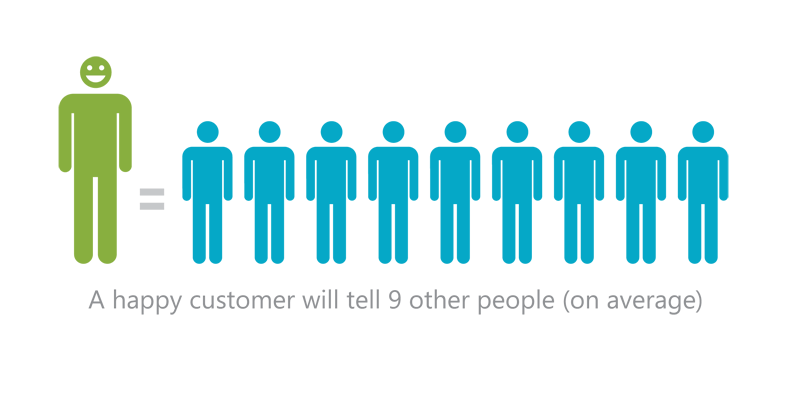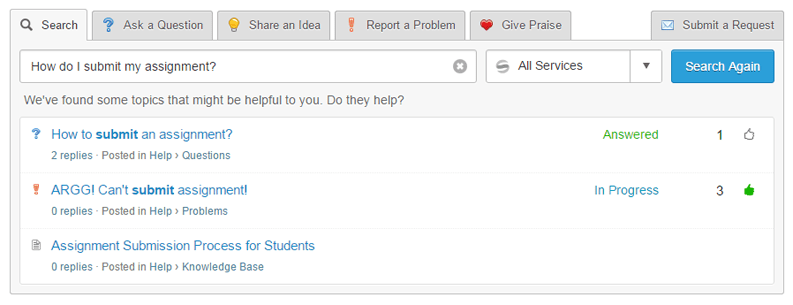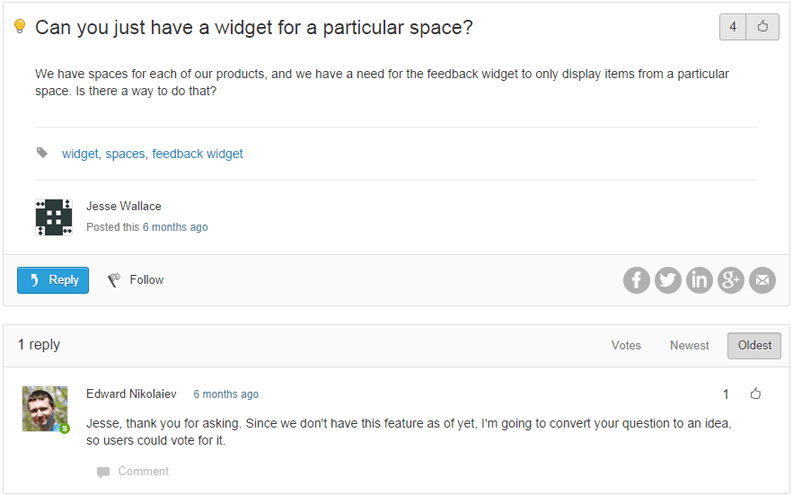-
Why 24/7 Support is the Best Way to Attract Customers
Wed, 7 Oct 2015, in Customer Service
Would you like an extra sales or support rep working around the clock on your behalf?
 photo credit Mike Mozart
photo credit Mike MozartRegardless of whether you’re a small business or a giant corporation, customers are expecting to find answers to their questions with minimal friction. It doesn’t matter if your customer base spans the world over or consists of people next door reaching you after hours. Your website is where they expect to find answers first.
Customers are increasingly looking for help when it’s convenient for them. More than that, they’re expecting to find answers in a matter of seconds. Customers also want almost instant gratification and associate it with amazing customer service. They’re often looking for answers during their off-hours or when performing routine tasks:
- waiting in line at a bank
- watching a late-night show on tv
- cooking dinner
- on a break at work
And it’s not just the younger generations that’s embracing service-on-demand, the older population has grown to expect it, too.
In a 2014 study, Forrester demonstrated that self-service and FAQ knowledge base sites took over phone support as the most used channel. Surprisingly, the largest increases among self-service adoption can be attributed to boomers (ages 50-69) as the older generation ages. This demographic, already used to email and social media are slowly drifting towards self-service in order to find what they need.
Does your brand live up to these kinds of expectations?
A lesson from Hawaiian Airlines
Sometimes the best thing to do is to leave the customers be. Hawaiian Airlines takes this to heart by letting the customer experience drive their sales, engagement and support – exactly the way customer wants it.
They believe in getting out of the way so that customers can experience the Hawaiian setting from the beginning, whether it starts by approaching the Hawaiian Airlines kiosk or visiting the website.
Yet with every decision they make, from selecting the right type of cutlery for in-flight meals to the most complex, such as moving into a new market – the customer is always driving the decision-making process. This is done by letting employees improvise and bring ideas up in weekly management meetings.
Step 1: Maximizing value from every visit
It’s not a secret that content can and will act as your marketing, sales and support when done right. In order to give customers a variety of support options, you should be prepared to pass over the reins into their hands.
This way, you’ll not only reduce your support requests directed to your help desk, but encourage a strategy for customers to solve problems on their own terms. Whatever "support path" your customer chooses, you will have an opportunity to increase the net promoter score and attract a larger user base using their positive word-of-mouth.

According to the White House Office of Consumer Affairs, one happy customer will tell an average of nine people about their positive experience. In order to build rapport and increase customer satisfaction you must offer value at the exact moment visitors land on your site – and it comes in the form of instant answers to their questions:

Use blogging to your advantage
Learn how to educate as opposed to being overly promotional in your content. When you’re looking for a solution to a problem, you don’t want to be sold and vice versa. For example, if you are a wedding photographer in the Austin area, it may be a better idea to write about how to have a great wedding in Austin instead of writing about what your company can do.
People will be reading and sharing your ideas and in doing so, explore other areas of your site. It’s a good idea to mention relevant information about your business at the end of your post, so that readers can contact you if they’re interested.
Leverage your reader base for support
Companies with successful communities understand that an interactive, channeled discussion platform acts as an extension of the self-service portal. It acts as a powerful extension of your brand, promotes customer-centricity and allows customers to build relationships with other users of your product.

An established community can increase customer collaboration, relieving agents of responsibility of always being there.
Tracking tools such as Google Analytics will help determine what pages customers spend the most time on. Using this information you can allocate your resources to better match their needs. Keeping tabs on your ticketing requests and development queries will give you additional ideas for knowledge base content. This way, future customers will be able to solve these problems without staff involvement.
If you’re ever at a loss for good web and knowledge base content, try tapping into your team’s expertise for inspiration. Your engineers and product managers are usually the experts on the matter, but chances are they’re too busy and want to get right into technical mode when writing.
Step 2: Outline support expectations (and exceed them)
We’re big on tracking how well we do support. After all, the power is in the details (and promises), so we like to make sure we constantly exceed customer expectations.In other words – if your response rate is 48 hours, then you should reply in that time frame and list it on your website! Replying sooner will make customers happier. When you reply and resolve the issue completely within that time (known as first resolution time), it makes the customers thrilled with your service and tell all their friends.
For that reason, service desk agreements immensely help in streamlining support queues and ensuring that our support team and customers are on the same page. Most importantly, it makes the customer feel in control, something that inherently brings about emotions of satisfaction.
Beware of these pitfalls of 24/7 support:
What do you do when customers are looking for answers in the wee hours of the morning and your agents aren’t expected to be in the office for another six hours? Unfortunately, it’s difficult for many companies to find a workaround to this problem. Making all customers happy all the time can seem like an insurmountable task, but only because it’s easy to make a mistake. Keep an eye out for these top pitfalls:
Not being human enough
Although there’s nothing wrong with automation or answering with canned replies – there’s a fine line between using automations to check order status and sending out mass emails. The latter risks giving customers the impression that they are dealing with a machine and no live person is really taking care of their concern.
Customers need to feel like they are dealing with a person, not a robot.
Not being where your customers are
Even if you’re making it clear that you’re responding to every request within a 48 hour period, you need to account for customers who are looking for answers on Friday while you’re ready to pack up for the weekend. If your customers want support over the weekend and you’re not there, offer alternative support solutions.
Driving wedges between you and your team
If you focus on tracking team performance, you can quickly lose track of important metrics such as customer satisfaction. Ideally, support staff should have a vested interest in doing whatever it takes to keep all customers happy. By pushing the blame on support agents for the slightest of mistakes, they’ll build up resentment that can trickle down through your business.
In conclusion…
Customer service in organizations is slowly moving away from being a cost center to business differentiator and profit center. Therefore organizations that are able to offer service on-demand according to the customer’s preferred channel and at desired service levels tend to get the attention of customers.
And stay fresh in their minds long after the support experience is over.
Tags: customer service



